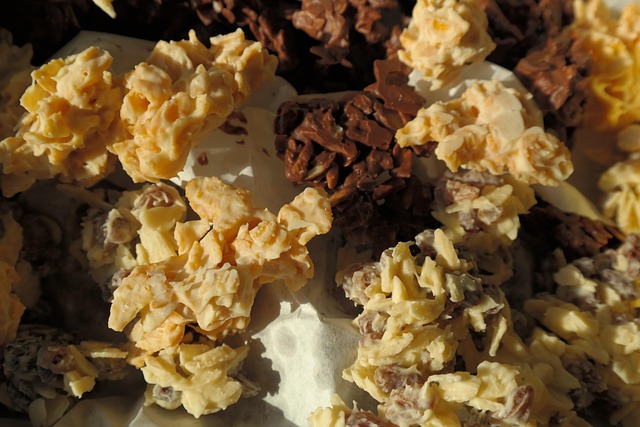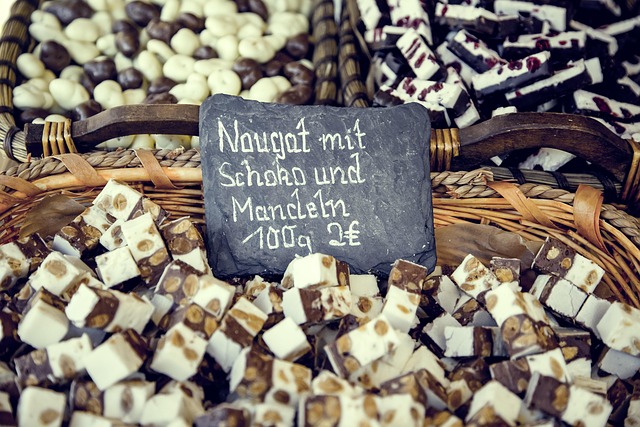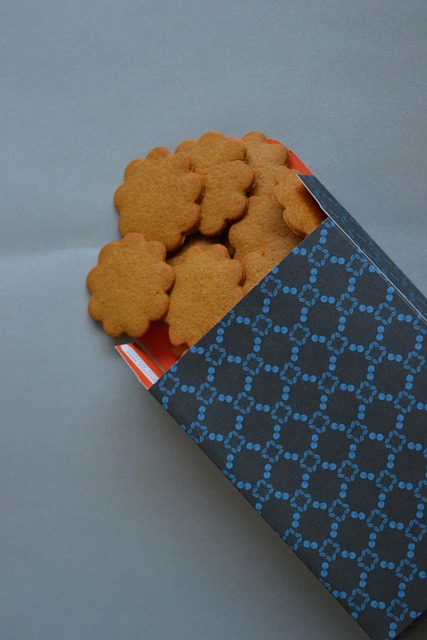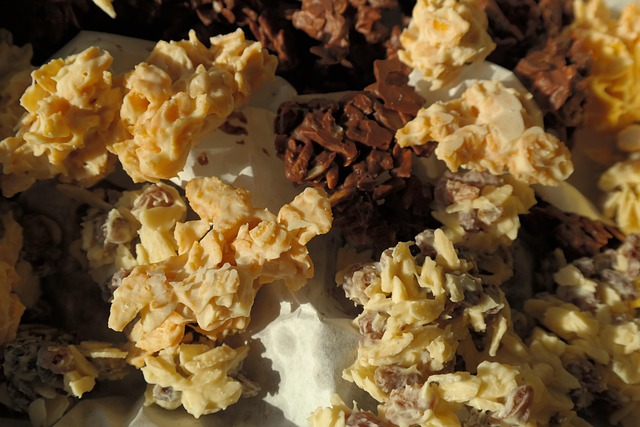Cookie printing technology has revolutionized the culinary world, specifically in the realm of specialty cookies. This advanced technique allows for precise placement of dough or icing, enabling the creation of intricate designs and personalized messages. By digitizing designs and translating them into specialized printing plates, bakers can craft unique shapes catering to various occasions and tastes. Cookie printing boosts efficiency, reduces manual labor, and ensures consistent quality, making it a top choice for businesses aiming to impress with gourmet culinary creations. This technology's future prospects include 3D printing, but challenges like food safety, quality control, environmental impact, and sustainable materials must be addressed.
“Discover the revolutionary world of Cookie Printing Technology, transforming the baking industry with precision and creativity. This innovative method allows for the production of specialty cookies like never before, offering endless design possibilities. From intricate patterns to personalized messages, cookie printing is reshaping the way bakers craft their creations. Explore its benefits, from increased efficiency to enhanced customer experiences, and delve into diverse applications across the food industry. Uncover future trends and potential challenges as this technology continues to sweeten the market.”
- What is Cookie Printing Technology?
- How Specialty Cookies Are Made Using This Innovation
- The Benefits of Cookie Printing for Bakers and Businesses
- Applications and Use Cases in the Food Industry
- Future Trends and Potential Challenges for Cookie Printing
What is Cookie Printing Technology?

Cookie printing technology refers to the innovative process of creating custom and specialized cookies by using advanced printing techniques. It involves precisely depositing dough or icing onto a baking surface, allowing for intricate designs, logos, and personalized messages to be crafted on cookies. This cutting-edge method has revolutionized the culinary arts, particularly in the realm of specialty cookies.
By utilizing cookie printers, businesses and bakers can offer unique and visually appealing treats, catering to diverse preferences and occasions. From wedding favors to themed party gifts, cookie printing enables the production of gourmet, decorative cookies that showcase creativity and attention to detail. The technology ensures consistent quality and accuracy in every batch, making it a popular choice for those seeking to impress with their culinary creations.
How Specialty Cookies Are Made Using This Innovation

Specialty cookies are crafted with precision and creativity using cookie printing technology. The process begins by designing intricate patterns and shapes on a computer, which are then transferred to specialized printing plates or stamps. These tools allow for detailed and accurate imprinting of designs onto rolled-out dough, enabling the creation of unique cookie forms. After the dough is cut or stamped into desired shapes, it undergoes baking, resulting in visually appealing and customized cookies.
This innovative approach not only enhances the aesthetic appeal of cookies but also opens up a world of possibilities for personalized gifts, marketing campaigns, and themed events. Cookie printing technology ensures that each cookie is a work of art, catering to various preferences and occasions. From intricate logos and messages to whimsical illustrations, the versatility of this method makes it a favorite among bakers and businesses looking to create memorable Specialty Cookies.
The Benefits of Cookie Printing for Bakers and Businesses

Cookie printing technology offers a myriad of benefits, revolutionizing the way bakers and businesses create and produce specialty cookies. One of its key advantages is the level of customization it allows. With advanced printing techniques, bakers can design intricate patterns, logos, or even personalized messages on cookies, catering to diverse customer preferences and occasions. This innovation ensures that each cookie becomes a unique, edible work of art.
Moreover, cookie printing technology streamlines production processes, increasing efficiency and reducing manual labor. It enables businesses to meet high demand without compromising quality or consistency. The precision of the printing process results in uniform cookies with precise designs, ensuring customer satisfaction and building brand reputation. For bakeries and specialty food businesses, this technology is a game-changer, offering creative freedom, enhanced productivity, and improved customer engagement through visually appealing, customizable treats.
Applications and Use Cases in the Food Industry

Cookie printing technology has opened up a world of possibilities in the food industry, particularly for specialty cookies. This innovative approach allows for precise customization and intricate designs, transforming the traditional cookie-baking process. With advanced printing techniques, manufacturers can now create unique shapes, logos, and even personalized messages on cookies, catering to diverse consumer preferences.
In practice, this technology has numerous applications. It enables bakeries and food producers to offer customized cookie gifts, perfect for corporate branding or special occasions. The ability to print different flavors, textures, and nutritional elements also allows for a wide range of product variations, appealing to health-conscious consumers. Moreover, cookie printing ensures consistent quality and accuracy, making it ideal for high-volume production while maintaining the level of detail often associated with artisanal baking.
Future Trends and Potential Challenges for Cookie Printing

The future of cookie printing looks promising, with advancements in technology paving the way for even more specialized and customized treats. One trend to watch is the integration of 3D printing technology, allowing for intricate designs and unique shapes that were once unimaginable. This innovation can transform ordinary cookies into edible works of art, catering to consumers’ growing demand for personalized, gourmet experiences.
However, as with any emerging technology, there are challenges to address. Ensuring food safety and maintaining consistent quality during high-volume printing are top priorities. Additionally, the environmental impact of waste reduction and sustainable material choices needs consideration, especially as the market expands. Overcoming these obstacles will be crucial for the widespread adoption of cookie printing, ensuring that specialty cookies remain not just delicious but also environmentally friendly and safe.



